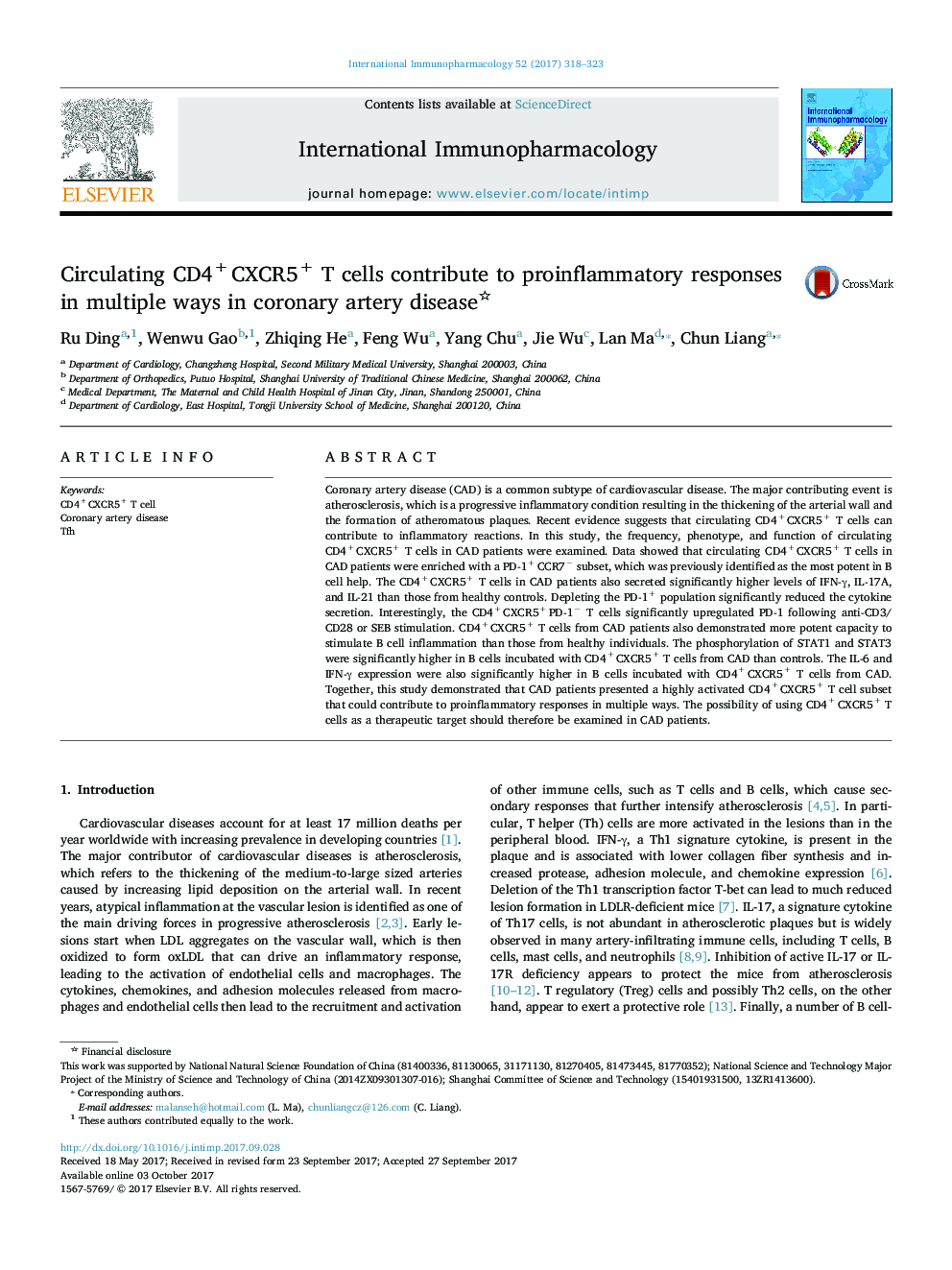| Article ID | Journal | Published Year | Pages | File Type |
|---|---|---|---|---|
| 5555277 | International Immunopharmacology | 2017 | 6 Pages |
â¢Circulating Tfh in CAD were examined.â¢Circulating Tfh in CAD were enriched with the PD-1 + CCR7- subset.â¢Circulating Tfh in CAD secreted higher levels of IFN-γ, IL-17A, and IL-21.â¢Circulating Tfh in CAD increased expression of multiple B cell inflammatory genes.
Coronary artery disease (CAD) is a common subtype of cardiovascular disease. The major contributing event is atherosclerosis, which is a progressive inflammatory condition resulting in the thickening of the arterial wall and the formation of atheromatous plaques. Recent evidence suggests that circulating CD4+ CXCR5+ T cells can contribute to inflammatory reactions. In this study, the frequency, phenotype, and function of circulating CD4+ CXCR5+ T cells in CAD patients were examined. Data showed that circulating CD4+ CXCR5+ T cells in CAD patients were enriched with a PD-1+ CCR7â subset, which was previously identified as the most potent in B cell help. The CD4+ CXCR5+ T cells in CAD patients also secreted significantly higher levels of IFN-γ, IL-17A, and IL-21 than those from healthy controls. Depleting the PD-1+ population significantly reduced the cytokine secretion. Interestingly, the CD4+ CXCR5+ PD-1â T cells significantly upregulated PD-1 following anti-CD3/CD28 or SEB stimulation. CD4+ CXCR5+ T cells from CAD patients also demonstrated more potent capacity to stimulate B cell inflammation than those from healthy individuals. The phosphorylation of STAT1 and STAT3 were significantly higher in B cells incubated with CD4+ CXCR5+ T cells from CAD than controls. The IL-6 and IFN-γ expression were also significantly higher in B cells incubated with CD4+ CXCR5+ T cells from CAD. Together, this study demonstrated that CAD patients presented a highly activated CD4+ CXCR5+ T cell subset that could contribute to proinflammatory responses in multiple ways. The possibility of using CD4+ CXCR5+ T cells as a therapeutic target should therefore be examined in CAD patients.
